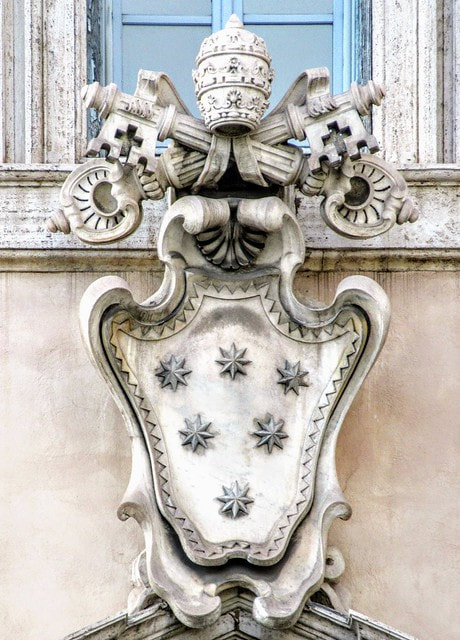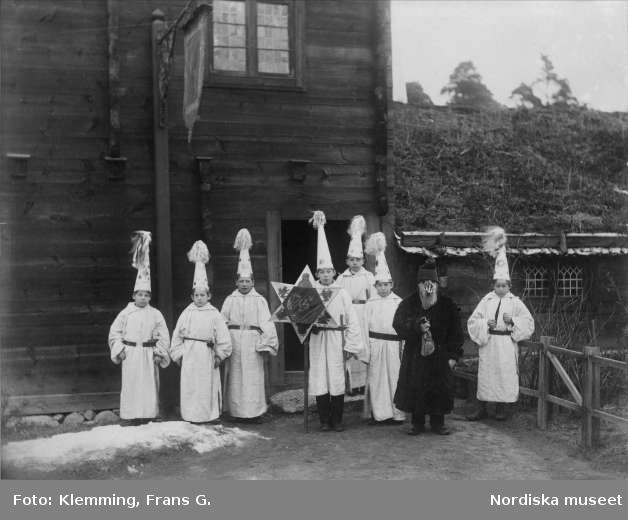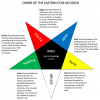SARA RUTH ASHCRAFT SPEAKS ABOUT SATANISTS HIVITES
- Thread starter Vmort
- Start date
From Rome Art Lovers
Etruscan Smiles


Cremation was the ordinary mode of disposing of human corpses among the Etruscans; the image used as background for this page shows a small cinerary urn resembling a house. The cinerary urns were often placed inside sarcophagi, but the term should be applied only when the corpse is laid there to be eaten by the stone. It is more correct to say that they were placed inside larger containers together with a set of jewels, vases, weapons, etc. The dead are often portrayed in terracotta Etruscan sarcophagi with a very intriguing smile on their face:
They are dead with all their vices
and all that is left
is the shadowy monomania of some cypresses
and tombs.
The smile, the subtle Etruscan smile still lurking
within the tombs.
- From Trees by David Herbert Lawrence
Etruscan Smiles


elsbet
Superstar
- Joined
- Jun 4, 2017
- Messages
- 5,122
Wow... aren't the Phoenicians thought to be the (missing) tribe of Dan?Disney World Epcot’s Spaceship Earth attraction - "if you can read this, thank the Phoenicians" merchandise


Or just "Thank the Phoenicians"









Disneyworld ride & Disney funko pop phoenician


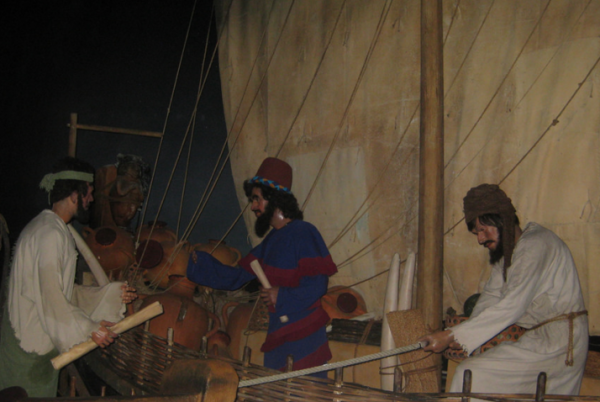


Original purveyors of the somewhat ill-gotten (but honestly gorgeous) indigo / royal purple and blue pigment?
............
I guess we are to assume they are responsible for PHONICS... like the book we had in kiddygarden.
Hmm... interesting.
Both the Etruscans and the Babylonians practiced hepatoscopy. They looked at a sacrificed animal's entrails in divination, especially the livers of sheep and birds.
Diagrams of a sheep's liver - Etruscan and Babylonian
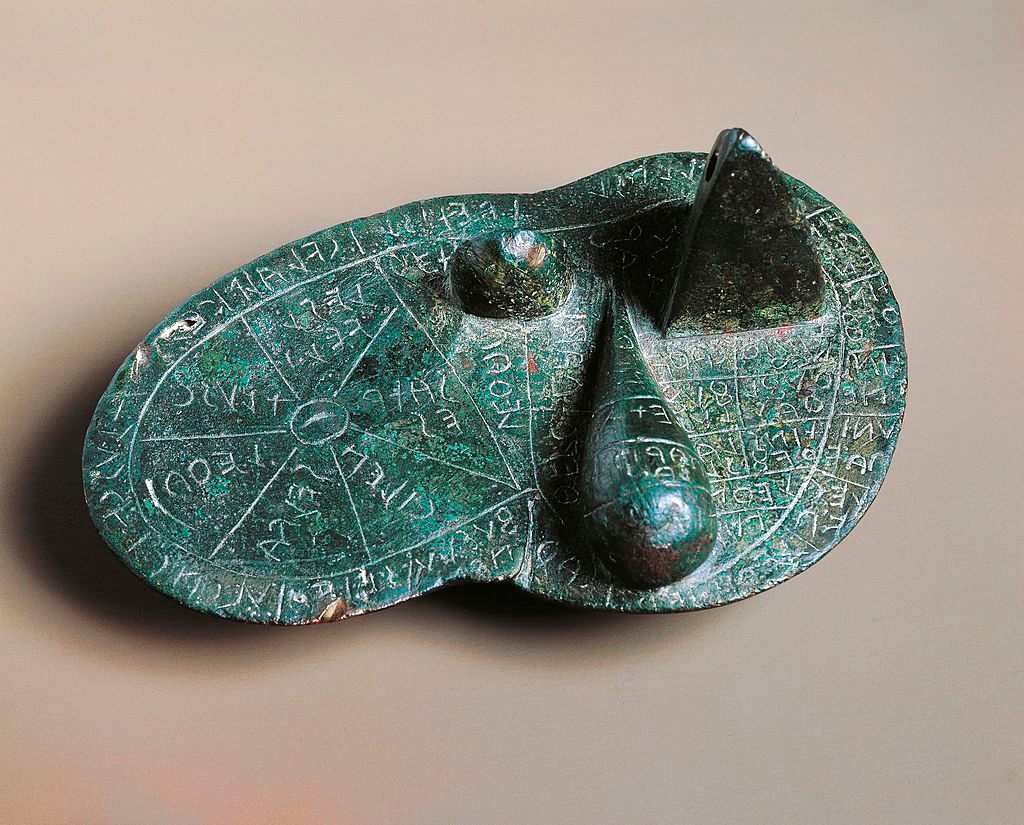
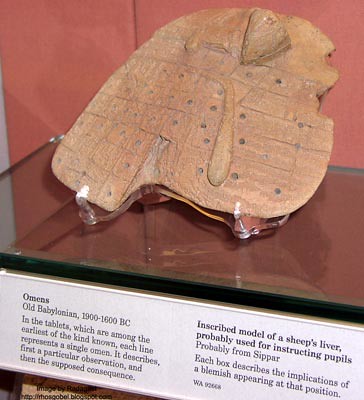

To the Babylonians, the liver was considered the source of the blood and hence the basis of life itself. They thought they could discover the will of the gods by examining the livers of carefully selected sheep. A priest known as a bārû was specially trained to interpret the "signs" of the liver, and Babylonian scholars assembled a monumental compendium of omens called the Bārûtu. It is mentioned in the Book of Ezekiel 21:21:
The Babylonians addressed the gods, Shamash and Adad, with prayers and benedictions, requesting them to "write" their message upon the entrails of the sacrificial animal .


The Etruscans say they were taught hepatoscopy or haruspicy by the child like prophet Tages. A priest that practiced haruspicy was called a haruspex.
Tages, Staff of Roman priests - Bishops (Serpent) Crozier
Etruscan Lituus


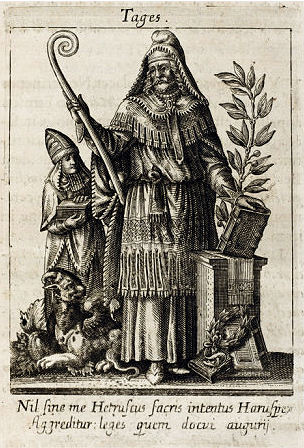
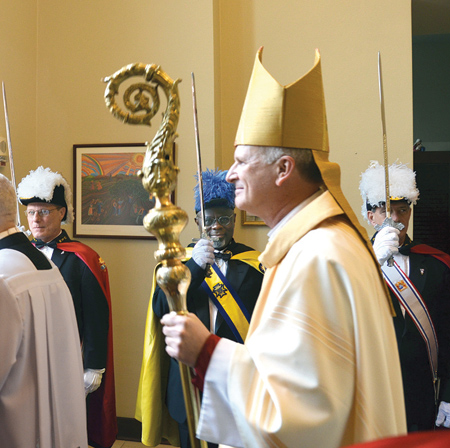




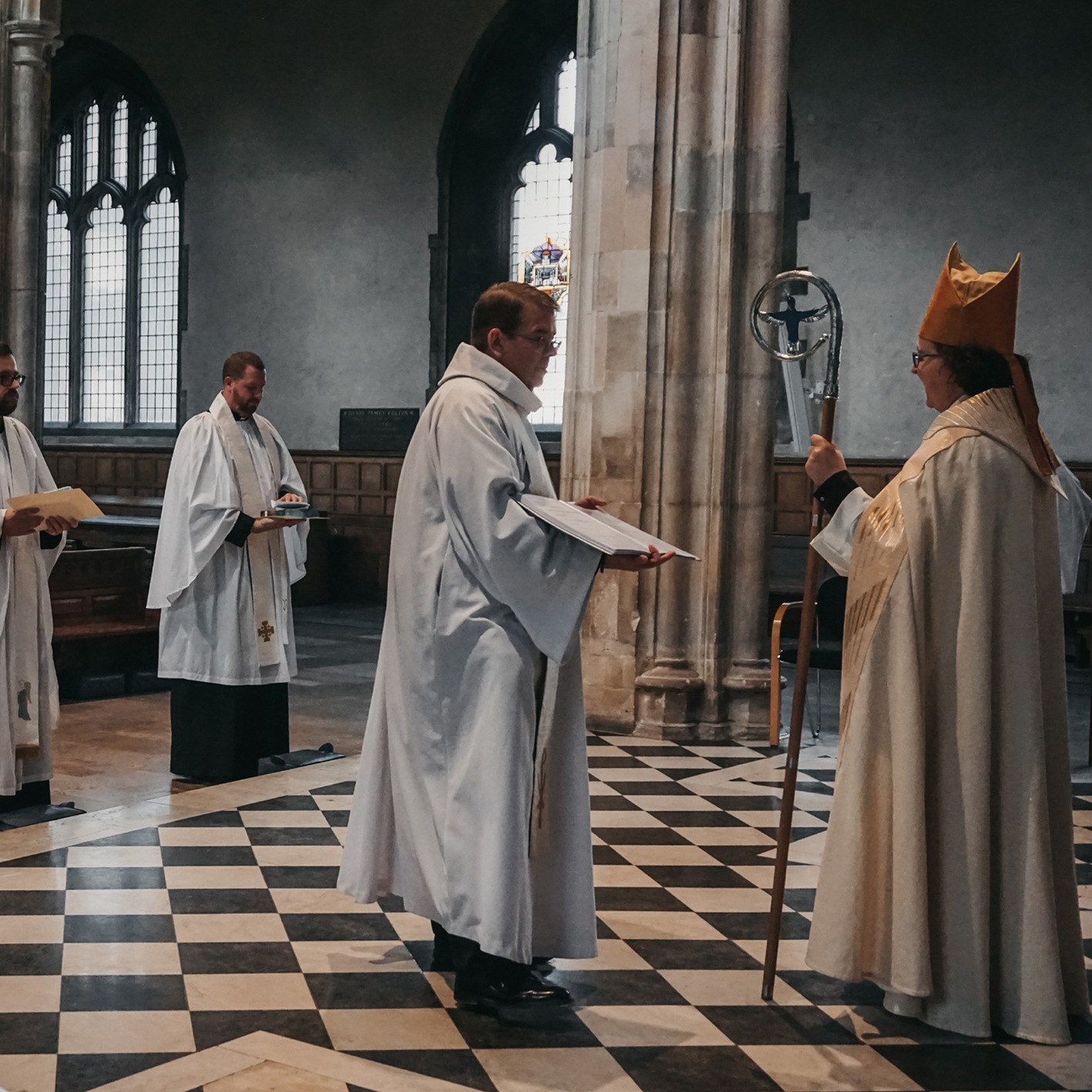

Serpent Staffs





Diagrams of a sheep's liver - Etruscan and Babylonian



To the Babylonians, the liver was considered the source of the blood and hence the basis of life itself. They thought they could discover the will of the gods by examining the livers of carefully selected sheep. A priest known as a bārû was specially trained to interpret the "signs" of the liver, and Babylonian scholars assembled a monumental compendium of omens called the Bārûtu. It is mentioned in the Book of Ezekiel 21:21:
"For the king of Babylon standeth at the parting of the way, at the head of the two ways, to use divination; he shaketh the arrows to and fro, he inquireth of the teraphim, he looketh in the liver."
The Babylonians addressed the gods, Shamash and Adad, with prayers and benedictions, requesting them to "write" their message upon the entrails of the sacrificial animal .


The Etruscans say they were taught hepatoscopy or haruspicy by the child like prophet Tages. A priest that practiced haruspicy was called a haruspex.
Tages, Staff of Roman priests - Bishops (Serpent) Crozier
Etruscan Lituus










Serpent Staffs




The leather is too thin to be cow's leather. Cow leather is the thick one.The leather itself came not from kangaroos, of course, but from the Chianina cattle, who came to Italy together with the Etruscans and provided the ancestral form of Florentine beefsteak

The skin has been taken from human body -- the leather we see is thin one.


Tarot Garden
Niki de Saint Phalle was inspired by Bomarzo for her Tarot Garden, Giardino dei Tarocchi. Rothschilds have taken her works as the wine label. They have professional artists create their wine labels.
In the first picture, the serpent is offering Eve a bottle of Rothschild wine. It also refers to the "Niki-object."
"From the sun to the plate, taking in a sensual mouth and an outstretched hand, Niki de Saint Phalle’s composition for Mouton is a sparkling, festive allegory of the pleasures of the table. And then, running across the painting, there is the “Niki-object”, springing from a story as old as the world itself: the serpent tempter. But instead of the traditional apple, this serpent, more wine-loving than malign, is offering Eve a bottle … of Mouton Rothschild 1997 no doubt!"

Tarot Garden (1974–1998)
In 1976, she retreated to the Swiss Alps to refine her plans for the sculpture park.[51] In 1977 Ricardo Menon, an Argentinian, became her assistant; he would work closely with her until 1986.[13][78]
In 1977, she worked with the English writer Constantin Mulgrave to design sets for The Traveling Companion, based on a Hans Christian Andersen fairy tale, but the project was never completed.[51] She and Mulgrave lived together for around four years, but Tinguely remained a continually reappearing presence in her life.[24]: 101–103
In 1977, she also visited Mexico and New Mexico, in search of more extensive artistic inspirations.[51]
In 1978, Saint Phalle started to lay out her sculpture garden in an abandoned quarry in Garavicchio, Tuscany, about 100 kilometres (62 mi) north-west of Rome near the west coast of the Italian peninsula. The following year, sites were cleared, and foundations were established.[73]
In 1979, she produced the first of what would become a new series of sculptures, the Skinnies. These were flat, planar, see-through outlines of heads and figures, highlighted by patches of color. In some ways, they resembled her colorful sketches and drawings but scaled up to monumental size. The series also symbolized Saint Phalle's struggles against emphysema and illness.[79] She continued to produce her Nanas in addition to her new style of sculpture,[13] and both styles of figures would appear in her Tarot Garden project.
In 1980, Saint Phalle and her team began to build the first architectural sculpture in the garden. As the project progressed, Saint Phalle started taking lessons in the Italian language, to better communicate with local workers.[20] The second crew member she hired was Ugo Celletti, a 50-year-old part-time postal delivery man, who discovered a love for mosaic work on the project.[20][80] He would work on the project for 36 years and recruit his nephews to join in; some family members are still involved in maintaining the site.[81][80]
She invited artist friends from Argentina, Scotland, Holland, and France to help work on the sculptures.[20] Over time, Saint Phalle worked with dozens of people, including architects, ceramicists, ironworkers, bricklayers, painters, and mosaic artists.[82] The materials used in the Tarot Garden project would include steel, iron, cement, polyester, ceramic, mosaic glass, mirrors, and polished stones (which she called "M&M's").[12]
The structure of the more massive sculptures was very similar to the temporary Hon installation at the Moderna Museet in 1966, but this time the artworks were outdoors and needed to withstand the long-term weathering effects of sun and rain. The basic shape of the sculptures was established with frameworks made of welded steel rebar. A second layer of lighter-gauge steel reinforcement bars was added, followed by two layers of expanded metal. A specialist firm was then brought in to spray shotcrete onto the structure. A layer of tar for waterproofing and a final layer of white cement produced a sturdy, hollow structure ready for decoration.[73]
In 1980, she also began selling a series of polyester snake chairs, vases, and lamps.[13] That year, she recorded her first attack of rheumatoid arthritis, a painful disease affecting the joints of the skeleton.[13]
In 1980–1981, she designed a colorful paint scheme for a Piper Aerostar 602 P twin-engine airplane, which participated in the first trans-Atlantic race sponsored by the Peter Stuyvesant Foundation of Amsterdam.[13] As an act of playful rebellion against the cigarette manufacturer sponsor, she added a "No Smoking" sign visible on the belly of the plane (she was allergic to tobacco smoke).[83]
In 1981, Saint Phalle rented a small house near the Tarot Garden and hired young people from Garavicchio to help with construction of the garden. Jean Tinguely led a Swiss team, comprising Seppi Imhoff and Rico Weber, and started welding the frames of the sculptures.[51] The following year, Dutch artist Doc Winsen (also called "Dok van Winsen") took up the welding operations.[13]
In 1982, Saint Phalle developed and marketed an eponymous perfume, using the proceeds to help finance her project.[28][27][13][84] The perfume bottle top featured a small sculpture of two intertwined snakes, one golden and the other brightly multicolored.[85] This was one of the first of what came to be called celebrity perfumes, using fame and name recognition to sell scented products.[2] She may have raised as much as a third of the funds she needed for the garden in this way.[20] She actively solicited funding from friends and acquaintances, as well as by selling her artworks.[20]
In August 1982, Saint Phalle was honored at the Street Festival of the Arts in New York City.[86] Later that year, Saint Phalle collaborated with Tinguely to produce the Stravinsky Fountain, a 15-piece sculptural fountain for Igor Stravinsky Square, located next to the Centre Georges Pompidou in Paris. Because of its prominent location in Paris, it would become one of the best-known collaborations between the two artists.
From 1983 until 1988 when on site,[73] Saint Phalle lived in a small apartment built into The Empress, a house-sized sphinx-like sculpture in the garden. On the second level, her bedroom was inside one breast, and her kitchen was inside the other one.[20][84] Each of these two rooms had a single recessed circular window, appearing as an inverted nipple when viewed from the outside.[87] In 2000, she would recall: "At last, my lifelong wish to live inside a sculpture was going to be granted: a space entirely made out of undulating curves ... I wanted to invent a new mother, a mother goddess, and be reborn within its form ... I would sleep in one breast. In the other, I would put my kitchen".[47]



Another HIVITE activity cover up it was in RUSSIAN EMPIRE ruled by HIVTE dynasty Romanov. CROSSES, pyramids, chalices all over them. And Rites, MASONIC RITES again. Just look at symbolism -- all the same.I was reading more about the Old Believers and the Old Rite. Can you tell me more about them?
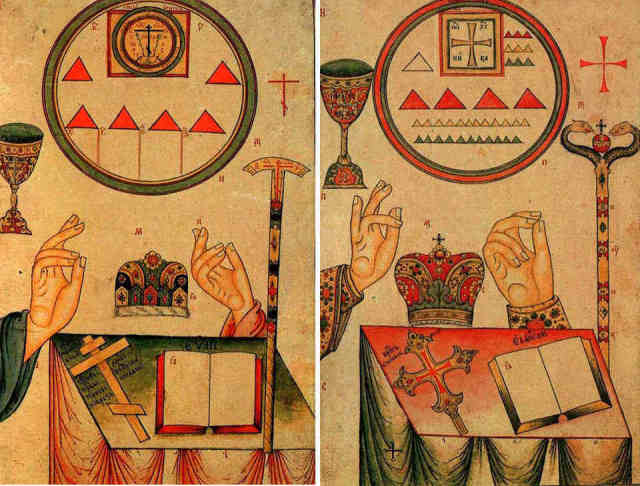

And all that secret worship... Why would you hide your activity if you aren't doing something criminal? All secret societies were HIVITES because they all did since a beginning canniballism and ritual abuse (MK ULTRA!)
I can only hope that they cosplayers not real HIVITES and their slaves.Modern Pictures
Last edited:
Naomi -- They give birth to a son, Ephraim, and later in this line comes Noah and his wife Naomi of the Ark fame. This is how the #Hivite culture married into State rule (Egypt) & found it's way into the modern era after the great flood (through the #Hivite priestess Naomi) #Phoenicia
Naomi, Georgia-- The Georgia Guidestones

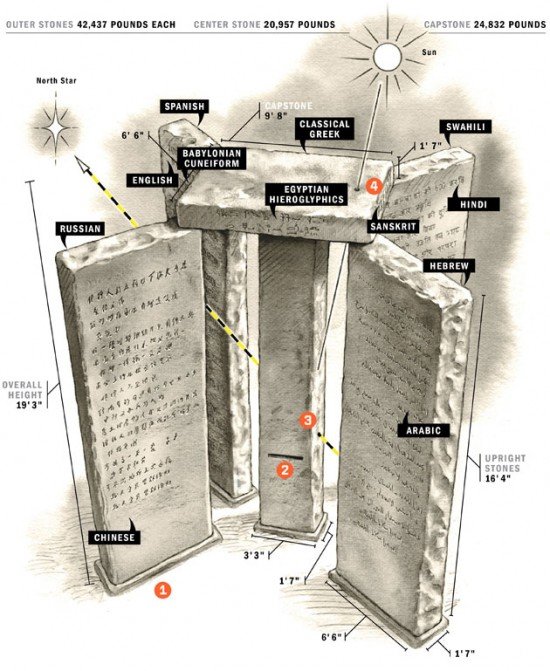
Naomi (biblical figure)
Naomi (Classically /neɪˈoʊmaɪ, ˈneɪ.oʊmaɪ/,[1] colloquially /neɪˈoʊmi, ˈneɪ.oʊmi/;[2] Hebrew: נָעֳמִי, Modern: Naʻomī, Tiberian: Nā‘omī) is Ruth's mother-in-law in the Hebrew Bible in the Book of Ruth. The etymology of her name is not certain, but it is possible that it means "good, pleasant, lovely, winsome."[3]
Biblical narrative[edit]
Naomi is married to a man named Elimelech. A famine causes them to move with their two sons, from their home in Judea to Moab. While there Elimelech dies, as well as his sons who had gotten married in the meantime. Near destitute, Naomi returns to Bethlehem with one daughter-in-law, Ruth, whom she could not dissuade from accompanying her.[4] Her other daughter-in-law, Orpah, remains in Moab.
When Naomi returns, she tells the Bethlehemites, "Do not call me Naomi, call me Mara (מרא), for the Almighty has dealt very bitterly with me". Barry Webb points out that there is not only an objective element in her life being bitter through bereavement, dislocation, and poverty, but also a subjective element—the bitterness she feels.[5] He further argues that in Chapter 1 of the Book of Ruth, Naomi's "perception of her condition" is "distorted by self-absorption," but that Ruth plays "a key role in her rehabilitation."[6] Abraham Kuyper, on the other hand, asserts that "Naomi has such innate nobility of character that she immediately elicits from us our most sincere sympathy."[7] The Book of Ruth depicts the struggles of Naomi and Ruth for survival in a patriarchal environment.[8]
The arrival of Naomi and Ruth in Bethlehem coincides with the barley harvest. Naomi gives Ruth permission to glean those fields where she is allowed. Ruth is working in the field of Boaz, when a servant identifies her to him as Naomi's daughter-in-law. It happens that Boaz is a kinsman of Naomi's late husband. He tells her to work with female servants, warns the young men not to bother her, and at mealtime invites her to share his food.
When Naomi learns that Ruth has the attention and kindness of Boaz, she counsels Ruth to approach him directly: "... [P]ut on your best attire and go down to the threshing floor. Do not make yourself known to the man before he has finished eating and drinking. But when he lies down, take note of the place where he does so. Then go, uncover a place at his feet, and lie down. He will tell you what to do." (Ruth 3:3–4)
Naomi (center) walking with Ruth, woodcut by Julius Schnorr von Karolsfeld
Webb points out Naomi's "feminine scheming" in forcing Boaz's hand.[9] Yitzhak Berger suggests that Naomi's plan was that Ruth seduce Boaz, just as Tamar and the daughters of Lot all seduced "an older family member in order to become the mother of his offspring." At the crucial moment, however, "Ruth abandons the attempt at seduction and instead requests a permanent, legal union with Boaz."[10]
Ruth marries Boaz, and they have a son, for whom Naomi cares,[4] and so the women of the town say: "Naomi has a son" (Ruth 4:17). In this way, the book can be seen to be Naomi's story: Gregory Goswell argues that Naomi is the central character of the book, whereas Ruth is the main character.[11] The son in question was Obed, who was the father of Jesse and thus later the grandfather of David.
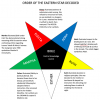
Naomi, Georgia-- The Georgia Guidestones


- Naomi, Georgia, an unincorporated community
- Naomi, Louisiana, a town in Plaquemines Parish, Louisiana
- Naomi, Missouri, an unincorporated community
- Naomi, Ohio, an unincorporated community
- Naomi, Pennsylvania, an unincorporated community
- Naomi, South Dakota, an unincorporated community
- Naomi Peak, Utah
- Lake Naomi, Pocono Pines, Pennsylvania
- site of the Naomi Mine explosion, a 1907 mining disaster in Pennsylvania, United States
Naomi (biblical figure)
Naomi (Classically /neɪˈoʊmaɪ, ˈneɪ.oʊmaɪ/,[1] colloquially /neɪˈoʊmi, ˈneɪ.oʊmi/;[2] Hebrew: נָעֳמִי, Modern: Naʻomī, Tiberian: Nā‘omī) is Ruth's mother-in-law in the Hebrew Bible in the Book of Ruth. The etymology of her name is not certain, but it is possible that it means "good, pleasant, lovely, winsome."[3]
Biblical narrative[edit]
Naomi is married to a man named Elimelech. A famine causes them to move with their two sons, from their home in Judea to Moab. While there Elimelech dies, as well as his sons who had gotten married in the meantime. Near destitute, Naomi returns to Bethlehem with one daughter-in-law, Ruth, whom she could not dissuade from accompanying her.[4] Her other daughter-in-law, Orpah, remains in Moab.
When Naomi returns, she tells the Bethlehemites, "Do not call me Naomi, call me Mara (מרא), for the Almighty has dealt very bitterly with me". Barry Webb points out that there is not only an objective element in her life being bitter through bereavement, dislocation, and poverty, but also a subjective element—the bitterness she feels.[5] He further argues that in Chapter 1 of the Book of Ruth, Naomi's "perception of her condition" is "distorted by self-absorption," but that Ruth plays "a key role in her rehabilitation."[6] Abraham Kuyper, on the other hand, asserts that "Naomi has such innate nobility of character that she immediately elicits from us our most sincere sympathy."[7] The Book of Ruth depicts the struggles of Naomi and Ruth for survival in a patriarchal environment.[8]
The arrival of Naomi and Ruth in Bethlehem coincides with the barley harvest. Naomi gives Ruth permission to glean those fields where she is allowed. Ruth is working in the field of Boaz, when a servant identifies her to him as Naomi's daughter-in-law. It happens that Boaz is a kinsman of Naomi's late husband. He tells her to work with female servants, warns the young men not to bother her, and at mealtime invites her to share his food.
When Naomi learns that Ruth has the attention and kindness of Boaz, she counsels Ruth to approach him directly: "... [P]ut on your best attire and go down to the threshing floor. Do not make yourself known to the man before he has finished eating and drinking. But when he lies down, take note of the place where he does so. Then go, uncover a place at his feet, and lie down. He will tell you what to do." (Ruth 3:3–4)
Naomi (center) walking with Ruth, woodcut by Julius Schnorr von Karolsfeld
Webb points out Naomi's "feminine scheming" in forcing Boaz's hand.[9] Yitzhak Berger suggests that Naomi's plan was that Ruth seduce Boaz, just as Tamar and the daughters of Lot all seduced "an older family member in order to become the mother of his offspring." At the crucial moment, however, "Ruth abandons the attempt at seduction and instead requests a permanent, legal union with Boaz."[10]
Ruth marries Boaz, and they have a son, for whom Naomi cares,[4] and so the women of the town say: "Naomi has a son" (Ruth 4:17). In this way, the book can be seen to be Naomi's story: Gregory Goswell argues that Naomi is the central character of the book, whereas Ruth is the main character.[11] The son in question was Obed, who was the father of Jesse and thus later the grandfather of David.

Last edited:
PART 1
DICTONNARY OF SYMBOLS @Shuna. The dictionary has different publications: mine is from 1991:

CROWN OF THORNS @Shuna explains Crown:
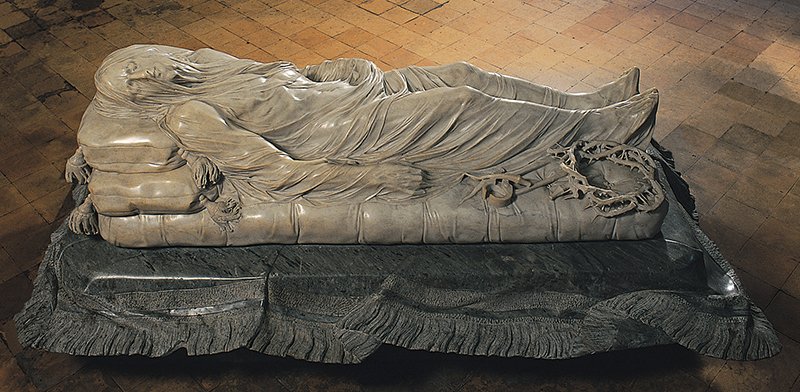
The Mandaean liturgies attest to an effective crowning rite of the new baptism.
To explain the texts of the Odes of Solomon, we can still appeal to a last aspect of the theme of the crown. It is known that the gift of the nuptial crown is an essential dream of oriental weddings.
As the Odes are not reluctant to speak of spiritual nuptials between the soul and Christ, it is permissible to wonder if the symbol of the crown cannot be said to be understood in this sense.
@Shuna explains Thorn
The thorn evokes the idea of obstacle, difficulty, external defense, and consequently, a surly and unpleasant approach. Lépine is the natural defense of the plant, which cannot fail to recall the role of the horn in animals. Note that in topology, the name thorn is often given to standing stones, which include an axial and solar symbol. Guenon noted on this subject that the crown of thorns of Christ (thorns of acacia, it is said) may be related to the crown with rays, the thorns being identified, by a reversal of the symbol, with the luminous rays that emanate from the body of the Redeemer. It is true that Christ crowned with thorns is sometimes represented in a radiant aspect.
The crown of thorns of Christ during his passion, according to another interpretation, celebrates the marriage of heaven and earth celebrates the marriage of heaven and the virgin earth - Son of Man - and the Earth, virgin who can always to be fertilized.
EGYPT @Shuna explains:
At school, I had assumed that Egypt was represented by a body, because of the separation between upper and lower Egypt. I was able to confirm it with a video, (which I put aside in my blog... I will post the link later) which presented and put the data (from the date of construction to the place) of each Temple. Each temple represents what is the sephiros for Kabbalah. The way of the serpent is the ouroboros, the way on Kabbalah stopping at every sephiro (or on each of the two columns it has a serpent). Each temple is represented by a God, and as I suggested, and confirmed by the video, that each God [of light (or matter)] represents a part of the God and its construction in relation to the stars (like a part buildings on earth are placed from the stars, such as the triumphal arch or the Mayan cities (which can be built in the same way as that of Egypt).
Another guess I made is that often in representations, the crown of Egypt has two feathers. I had associated and it is associable, with the wings of Netphys (Lucifer), Goddess of the earth. She is also the protective Goddess. It can in this case represent Egypt, a feather, like a wing for each part of Egypt (it makes me think of Korea, which is currently divided into two countries...). The position of the feathers is very often used, in the form of a column:
(The first comes from a piece of furniture, [(whose center made me think of an apple of bread and leaves on the sides) the other from a Chinese series (whose representation of the center, made me think of a diamond , knowing that he comes from a flag, from a family that has the power to use ice).]
I often talk about it: In the center: it has either the pineal gland (given the representation, it is the one to which I lean the most). Either the navel (which reminds me of Easter Island, which translates from its real name to "The navel of the world". Or it's the body and the spirit, in reference to this KPop clip capture (whose name I forget):
Or the connection between two beings (between two lights).
I even thought, although I quickly withdrew the idea that the top associated with the head (because of the pineal gland), and therefore with the spirit and the bottom with the body.
Note, I didn't want to mark him, but since he probably confided to a lot of people, and that I find important: Among the Amerindians outside, from the rite of the thunderbird (which is also to pray on Easter Island), as being the main God, and of which he disguises himself (on Easter Island, whoever represents him shaves his head). Each family, of the spouses gives a bird feather, which they attach to the tent of the newlyweds. An extremely valuable asset for those who don't have much.
Small note, of personal association which I was able to confirm by the report on the Forces of Nature, on the end of Cleopatra and the capture of Rome, seen on RMC Story: "The great enigmas of History Season 6 Episode 5: Egypt, the volcano of the apocalypse": It was broadcast after a report on Atlantis, then another report and even, on the disaster of the volcano which destroyed Atlantis.
Many civilizations live next to volcanoes, at a time, like on Easter Island, it is due to the worship of the God. I am just currently writing about the phallus symbol.
For the locusts armed with iron, refers to Rome, which, like many other nations, fed on wheat, cultivating thanks to the Ni, the Egyptians, could no longer feed themselves... and the Romans, wanted to invade everything .
WINGS ON THE BACK@Shuna explains:



As the sun is represented by an eagle. In the case of Venus, she is also represented with wings. Like angels, who also have wings. In the case of the Goddess, she also has wings, which also represents protection, which like her veil encompasses.
BLUE BIRD @Shuna explains: Twitter is blue bird so not a coincedence. Extract written on a site, perfectly underlines the project of the CIA: In this case, Project Bluebird was a mind control research program commissioned by the CIA between 1951 and 1953, a precursor to Project MKULTRA. Under this program, experiments on mind control are carried out and, in particular, on the search for a serum of truth, with in particular the use of LSD. I also came across this site, on Islamic dreams.
Dreaming of blue bird meaning interpretation in Islam:
Dreaming of a blue bird means that you will soon approach great happiness.
In the first place, the blue bird in a dream is considered a “symbol of good luck” in dream interpretation. Soon you will have wonderful happiness. However, if you look at the blue bird and you have negative emotions, know that it will have negative meanings, such as loneliness.
In the first place, the blue bird in a dream is considered a “symbol of good luck” in dream interpretation. Soon you will have wonderful happiness. However, if you look at the blue bird and you have negative emotions, know that it will have negative meanings, such as loneliness.
To dream of a blue bird indicates that you are pure and serious. It implies that your peers really trust you.
If you dream of a blue bird, you can soon become very happy. Human relationships, friendships and romance will be strong and good.
Moreover, having a dream of light blue birds is a sign that you are entering a happy and good period, this dream also announces that you will be able to feel a sense of security and wealth.
The dream of a light blue bird tells about your happiness. Fortune, like work or love, is your friend.
Blue Bird by Maurice Maeterlinck. Pictures from play thanks to @Sibi, More pictures:





BLACK HITLER EAGLE @Shuna explains: Adolf Hitler used it.

Left is Moon side, subcontious side. Right hemisphere.
Right is Sun side, contious side. Left hemisphere.
Eagle look at the left. Is that mean something?
It would be inspired by the Roman symbol as much as the eagle. For the "black sun", this comes from the Hindu symbol:
The swastika, symbol of "well-being" for Hindus (baliautrement.com)
@Shuna Please can you explain what this device at Ozma's head means?

 Princess Lia have one too
Princess Lia have one too

@Shuna
Ozma wears Poppy, which has many different meanings, depending on the colors:
Meaning of the poppy in the language of flowers - Kokomo
Princess Lia's hairstyle comes from Indian culture. This macaroon hairstyle represents the Mother Goddess among the Hopi (American Indians).
PHRYGIAN CAP@Shuna explains:

"Red cap which, in antiquity, was the sign of freeing Greek or Roman slaves. These when they wore this cap then became citizens of the Empire.
During the French Revolution, workers and bourgeois wore the Phrygian Cap to signify their attachment to Liberty and the Republic."
+ The Phrygian cap of the French Revolution (forumactif.org)
Etruscan pointed hat.

The last picture:
I think the hat represents the phallus, the symbol of the warrior. Despite, that they are clairvoyants, that they interpret, as well the intestines of animals, as the flashes, etc.:
Etruscan military history - Wikipedia (wikipedia.org)
DOVE WITH OLIVE BRANCH@Shuna explains:
I know the Bible, it was used by Noah. Hors Noé is a story that comes from a Babylonian book. The dove represents purity (of light). She brings back an olive branch (it is a symbol of longevity). Moreover, it is by finding the earth that she brings back the branch. It's one of the parts of the Bible that helped me the most to build my cycle. After, the drowning of the earth, it has the drying up by the sun. Thus, Jesus gives him a longer life, saving him from death.
SYCAMORE @Shuna explains:
Sacred tree in Egypt, in the gardens of the banks of the Nile, as in the fields of Ialou. This is the fig-sycamore (urticaceae). The souls in the form of birds had just placed on its branches. Its antlers and shade would symbolize the security and protection enjoyed by souls beyond the grave.
Sycamore, fatus flower, writes Gregory the Great in his Moralla. Zacchah perches on a sycamore, because the crowd prevents him from seeing Christ. To climb on a sycamore means to participate spiritually in a certain madness, the latter consisting in freeing oneself from all earthly interest, from all that is created. This gesture would symbolize here the madness of detachment and a certain contempt for public opinion, even anti-conformism. If the tree is a sign of vanity, to climb it is to ignore vanity.
MEDUSA GORGON @Shuna explains:

Three sisters, three monsters, heads crowned with an angry serpent, boar's tusks protruding from their lips, hands of bronze, wings of gold: Medusa, Euryale, Stheno. They symbolize the enemy to be fought. The monstrous deformations of the psyche are due to the perverted forces of the three drives: sociality, sexuality, spirituality. Euryale of sexual perversion. Stheno the social perversion, Medusa would symbolize the principal of these impulses: the spiritual and evolutionary impulse, but perverted in vain stagnation. One can only combat the guilt resulting from the vain exaltation of desires by striving to achieve ostentation, harmony; this is what symbolizes, when the Gorgons or the Erinnyes pursue someone, the entry into the temple of Apollo, god of harmony, as into a refuge.
Who saw the head of the Medusa in petrified retreat. Wasn't it because it reflected the image of personal guilt? But the acknowledgment of the fault, in a correct knowledge of oneself, can itself be perverted into sickly exasperation, into a scrupulous and paralyzing conscience. Paul Die! observes deeply: Admission can be - it almost always is - a specific form of imaginative exaltation: a regret, exaggerated. The exaggeration of the culpe inhibits the restorative effort. It only serves the culprit to reflect vainly in the complexity, imagined unique and of exceptional depth, of his subconscious life... It is not enough to discover the culpe: it is necessary to bear the sight of it objectively, no more exalted than inhibited (without exaggerating or minimizing it). The confession itself must be free from excess of vanity and guilt... Medusa symbolizes the distorted image of self... which petrifies with horror, instead of enlightening justly.
HIVITES SYMBOLISM: ZETA
From Springmeir book. Illuminati Formula how to create mind control slaves.
O. ZETA (snuff films): Zeta is the sixth letter, and it’s ancient meaning was a sacrifice.
CATHERINE ZETA JONES have photoshot with Red Door Symbolism. RED DOOR lead to RED ROOM --> RED RUM ---> MURDER! KILL ROOM!
Her father is Welsh and her mother is of Irish Catholic descent.[4] She was named after her grandmothers, Zeta Jones (derived from the name of a ship that her great-grandfather sailed on)[4] and Catherine Fair.








Red shoes she have


DICTONNARY OF SYMBOLS @Shuna. The dictionary has different publications: mine is from 1991:

CROWN OF THORNS @Shuna explains Crown:

The Mandaean liturgies attest to an effective crowning rite of the new baptism.
To explain the texts of the Odes of Solomon, we can still appeal to a last aspect of the theme of the crown. It is known that the gift of the nuptial crown is an essential dream of oriental weddings.
As the Odes are not reluctant to speak of spiritual nuptials between the soul and Christ, it is permissible to wonder if the symbol of the crown cannot be said to be understood in this sense.
@Shuna explains Thorn
The thorn evokes the idea of obstacle, difficulty, external defense, and consequently, a surly and unpleasant approach. Lépine is the natural defense of the plant, which cannot fail to recall the role of the horn in animals. Note that in topology, the name thorn is often given to standing stones, which include an axial and solar symbol. Guenon noted on this subject that the crown of thorns of Christ (thorns of acacia, it is said) may be related to the crown with rays, the thorns being identified, by a reversal of the symbol, with the luminous rays that emanate from the body of the Redeemer. It is true that Christ crowned with thorns is sometimes represented in a radiant aspect.
The crown of thorns of Christ during his passion, according to another interpretation, celebrates the marriage of heaven and earth celebrates the marriage of heaven and the virgin earth - Son of Man - and the Earth, virgin who can always to be fertilized.
EGYPT @Shuna explains:
At school, I had assumed that Egypt was represented by a body, because of the separation between upper and lower Egypt. I was able to confirm it with a video, (which I put aside in my blog... I will post the link later) which presented and put the data (from the date of construction to the place) of each Temple. Each temple represents what is the sephiros for Kabbalah. The way of the serpent is the ouroboros, the way on Kabbalah stopping at every sephiro (or on each of the two columns it has a serpent). Each temple is represented by a God, and as I suggested, and confirmed by the video, that each God [of light (or matter)] represents a part of the God and its construction in relation to the stars (like a part buildings on earth are placed from the stars, such as the triumphal arch or the Mayan cities (which can be built in the same way as that of Egypt).
Another guess I made is that often in representations, the crown of Egypt has two feathers. I had associated and it is associable, with the wings of Netphys (Lucifer), Goddess of the earth. She is also the protective Goddess. It can in this case represent Egypt, a feather, like a wing for each part of Egypt (it makes me think of Korea, which is currently divided into two countries...). The position of the feathers is very often used, in the form of a column:
(The first comes from a piece of furniture, [(whose center made me think of an apple of bread and leaves on the sides) the other from a Chinese series (whose representation of the center, made me think of a diamond , knowing that he comes from a flag, from a family that has the power to use ice).]
I often talk about it: In the center: it has either the pineal gland (given the representation, it is the one to which I lean the most). Either the navel (which reminds me of Easter Island, which translates from its real name to "The navel of the world". Or it's the body and the spirit, in reference to this KPop clip capture (whose name I forget):
Or the connection between two beings (between two lights).
I even thought, although I quickly withdrew the idea that the top associated with the head (because of the pineal gland), and therefore with the spirit and the bottom with the body.
Note, I didn't want to mark him, but since he probably confided to a lot of people, and that I find important: Among the Amerindians outside, from the rite of the thunderbird (which is also to pray on Easter Island), as being the main God, and of which he disguises himself (on Easter Island, whoever represents him shaves his head). Each family, of the spouses gives a bird feather, which they attach to the tent of the newlyweds. An extremely valuable asset for those who don't have much.
Small note, of personal association which I was able to confirm by the report on the Forces of Nature, on the end of Cleopatra and the capture of Rome, seen on RMC Story: "The great enigmas of History Season 6 Episode 5: Egypt, the volcano of the apocalypse": It was broadcast after a report on Atlantis, then another report and even, on the disaster of the volcano which destroyed Atlantis.
Many civilizations live next to volcanoes, at a time, like on Easter Island, it is due to the worship of the God. I am just currently writing about the phallus symbol.
For the locusts armed with iron, refers to Rome, which, like many other nations, fed on wheat, cultivating thanks to the Ni, the Egyptians, could no longer feed themselves... and the Romans, wanted to invade everything .
WINGS ON THE BACK@Shuna explains:


As the sun is represented by an eagle. In the case of Venus, she is also represented with wings. Like angels, who also have wings. In the case of the Goddess, she also has wings, which also represents protection, which like her veil encompasses.
BLUE BIRD @Shuna explains: Twitter is blue bird so not a coincedence. Extract written on a site, perfectly underlines the project of the CIA: In this case, Project Bluebird was a mind control research program commissioned by the CIA between 1951 and 1953, a precursor to Project MKULTRA. Under this program, experiments on mind control are carried out and, in particular, on the search for a serum of truth, with in particular the use of LSD. I also came across this site, on Islamic dreams.
Dreaming of blue bird meaning interpretation in Islam:
Dreaming of a blue bird means that you will soon approach great happiness.
In the first place, the blue bird in a dream is considered a “symbol of good luck” in dream interpretation. Soon you will have wonderful happiness. However, if you look at the blue bird and you have negative emotions, know that it will have negative meanings, such as loneliness.
In the first place, the blue bird in a dream is considered a “symbol of good luck” in dream interpretation. Soon you will have wonderful happiness. However, if you look at the blue bird and you have negative emotions, know that it will have negative meanings, such as loneliness.
To dream of a blue bird indicates that you are pure and serious. It implies that your peers really trust you.
If you dream of a blue bird, you can soon become very happy. Human relationships, friendships and romance will be strong and good.
Moreover, having a dream of light blue birds is a sign that you are entering a happy and good period, this dream also announces that you will be able to feel a sense of security and wealth.
The dream of a light blue bird tells about your happiness. Fortune, like work or love, is your friend.
Blue Bird by Maurice Maeterlinck. Pictures from play thanks to @Sibi, More pictures:




BLACK HITLER EAGLE @Shuna explains: Adolf Hitler used it.

Left is Moon side, subcontious side. Right hemisphere.
Right is Sun side, contious side. Left hemisphere.
Eagle look at the left. Is that mean something?
It would be inspired by the Roman symbol as much as the eagle. For the "black sun", this comes from the Hindu symbol:
The swastika, symbol of "well-being" for Hindus (baliautrement.com)
@Shuna Please can you explain what this device at Ozma's head means?



@Shuna
Ozma wears Poppy, which has many different meanings, depending on the colors:
Meaning of the poppy in the language of flowers - Kokomo
Princess Lia's hairstyle comes from Indian culture. This macaroon hairstyle represents the Mother Goddess among the Hopi (American Indians).
PHRYGIAN CAP@Shuna explains:

"Red cap which, in antiquity, was the sign of freeing Greek or Roman slaves. These when they wore this cap then became citizens of the Empire.
During the French Revolution, workers and bourgeois wore the Phrygian Cap to signify their attachment to Liberty and the Republic."
+ The Phrygian cap of the French Revolution (forumactif.org)
Etruscan pointed hat.

The last picture:
I think the hat represents the phallus, the symbol of the warrior. Despite, that they are clairvoyants, that they interpret, as well the intestines of animals, as the flashes, etc.:
Etruscan military history - Wikipedia (wikipedia.org)
DOVE WITH OLIVE BRANCH@Shuna explains:
I know the Bible, it was used by Noah. Hors Noé is a story that comes from a Babylonian book. The dove represents purity (of light). She brings back an olive branch (it is a symbol of longevity). Moreover, it is by finding the earth that she brings back the branch. It's one of the parts of the Bible that helped me the most to build my cycle. After, the drowning of the earth, it has the drying up by the sun. Thus, Jesus gives him a longer life, saving him from death.
Sacred tree in Egypt, in the gardens of the banks of the Nile, as in the fields of Ialou. This is the fig-sycamore (urticaceae). The souls in the form of birds had just placed on its branches. Its antlers and shade would symbolize the security and protection enjoyed by souls beyond the grave.
Sycamore, fatus flower, writes Gregory the Great in his Moralla. Zacchah perches on a sycamore, because the crowd prevents him from seeing Christ. To climb on a sycamore means to participate spiritually in a certain madness, the latter consisting in freeing oneself from all earthly interest, from all that is created. This gesture would symbolize here the madness of detachment and a certain contempt for public opinion, even anti-conformism. If the tree is a sign of vanity, to climb it is to ignore vanity.
MEDUSA GORGON @Shuna explains:

Three sisters, three monsters, heads crowned with an angry serpent, boar's tusks protruding from their lips, hands of bronze, wings of gold: Medusa, Euryale, Stheno. They symbolize the enemy to be fought. The monstrous deformations of the psyche are due to the perverted forces of the three drives: sociality, sexuality, spirituality. Euryale of sexual perversion. Stheno the social perversion, Medusa would symbolize the principal of these impulses: the spiritual and evolutionary impulse, but perverted in vain stagnation. One can only combat the guilt resulting from the vain exaltation of desires by striving to achieve ostentation, harmony; this is what symbolizes, when the Gorgons or the Erinnyes pursue someone, the entry into the temple of Apollo, god of harmony, as into a refuge.
Who saw the head of the Medusa in petrified retreat. Wasn't it because it reflected the image of personal guilt? But the acknowledgment of the fault, in a correct knowledge of oneself, can itself be perverted into sickly exasperation, into a scrupulous and paralyzing conscience. Paul Die! observes deeply: Admission can be - it almost always is - a specific form of imaginative exaltation: a regret, exaggerated. The exaggeration of the culpe inhibits the restorative effort. It only serves the culprit to reflect vainly in the complexity, imagined unique and of exceptional depth, of his subconscious life... It is not enough to discover the culpe: it is necessary to bear the sight of it objectively, no more exalted than inhibited (without exaggerating or minimizing it). The confession itself must be free from excess of vanity and guilt... Medusa symbolizes the distorted image of self... which petrifies with horror, instead of enlightening justly.
HIVITES SYMBOLISM: ZETA
From Springmeir book. Illuminati Formula how to create mind control slaves.
O. ZETA (snuff films): Zeta is the sixth letter, and it’s ancient meaning was a sacrifice.
CATHERINE ZETA JONES have photoshot with Red Door Symbolism. RED DOOR lead to RED ROOM --> RED RUM ---> MURDER! KILL ROOM!
Her father is Welsh and her mother is of Irish Catholic descent.[4] She was named after her grandmothers, Zeta Jones (derived from the name of a ship that her great-grandfather sailed on)[4] and Catherine Fair.








Red shoes she have


Last edited:
"Pointed hats were also a sign of untrustworthy foreigners. For example, in ancient Greek texts and art works, any figure described or shown as wearing a soft, slightly pointed cap (also called a Phrygian hat) was considered a barbarian. This barbaric status was also associated with rites deemed unholy or despicable by the primary culture (in this case, the Greeks). Yet it is only in the early modern period that they begin to be associated with witches in particular, thanks to the images of witches as used in anti-witchcraft pamphlets such as Mathers' Wonders of the Invisible World (1689) or woodcuts such as those made by William Dodd (1720)."
Etruscan
Haruspex - Priest


Greek Sacrifice - Haruspex
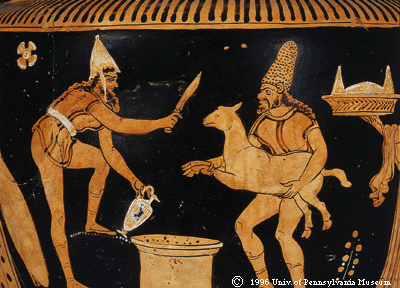

Phrygian Hat


French Coin 1793 - French Revolutionary Hat



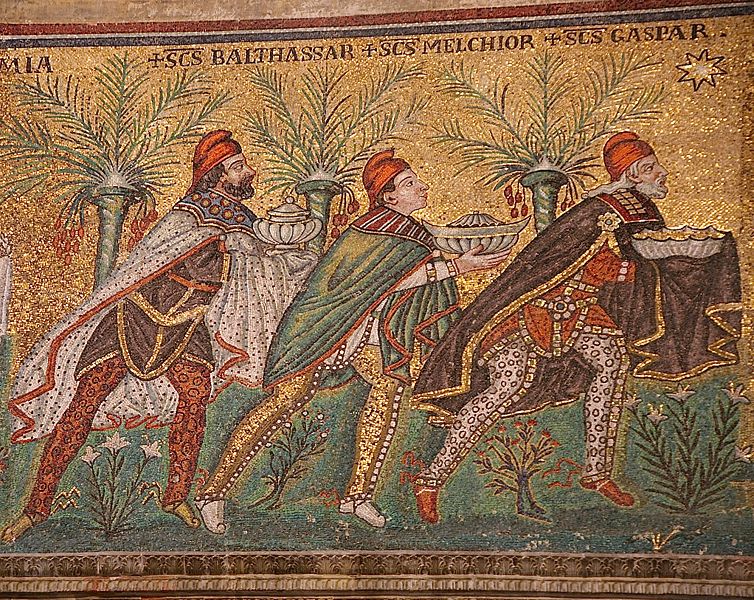
Phoenician figurines from the Temple of Obelisks at Byblos, Lebanon, Gilded bronze (7th-8th BCE).

Hittite & Canaanite Priest King and gods of the underworld





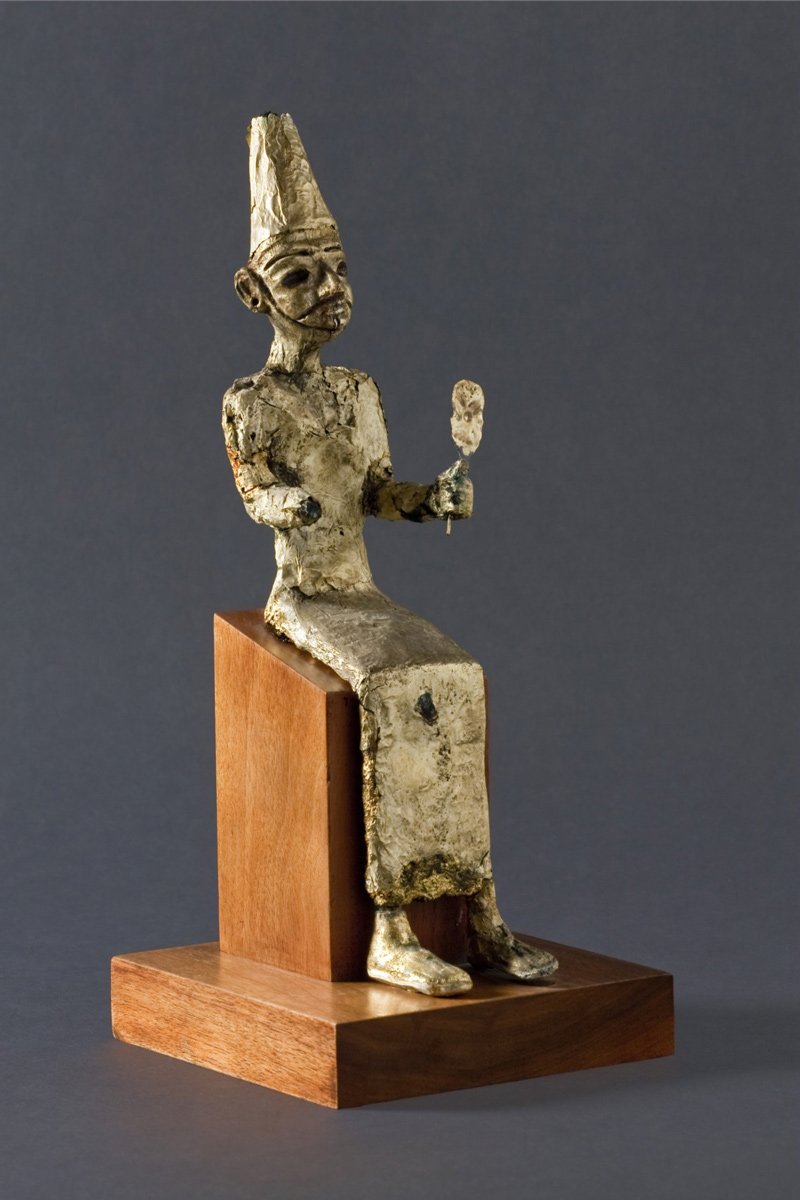
Scythian


The Four Gold Hats
Four golden hats. Bronze Age 3300 – 700 BCE. Found in France and Germany
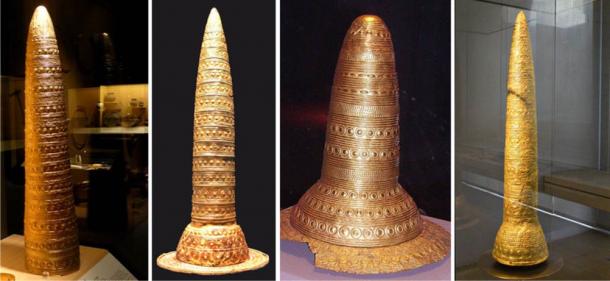
Etruscan
Haruspex - Priest


Greek Sacrifice - Haruspex


Phrygian Hat


French Coin 1793 - French Revolutionary Hat


"British Freemason and Rosicrucian, Hargrave Jennings had written in his Rosicrucians; “Their Rites and Mysteries says that the Phrygian Cap, the classic Mithraic Cap, sacrificial Cap, and mitre all derive from one common ancestor.”
This common ancestor may be known as Attis, Atys, Attes (Ancient Greek: Ἄττις or Ἄττης). The name Attis signifies “The Sinner,” and according to Herodotus, he was known as the son of the god. The Phrygians are said to be the oldest race in Asia Minor who worshiped Attys as the “only begotten son,”and as a savior.
It is Attis who is often depicted in art in a tunic, tucked up, and wearing a Phrygian cap. Later is history, those freemen who would wear the Phrygian Cap would prove themselves to be possessors of initiate knowledge. A sign of the “Enlightened.”
The Phrygian cap was worn by the revolutionists during the masonic French Revolution in the 18th century. After the overthrow of the French Monarchy, the French Declaration of Human Rights was said to be officially recorded as the Masonic values of the new French government, whose new motto was “Liberté, Égalité et Fraternité” (Freedom, Equality and Brotherhood). The official document of the Declaration of Human Rights is guarded by Masonic pillars and contains several occult symbols such as the all seeing eye of God, and the red phrygian cap, a symbol of freemen or freemasons representing the enlightened ones."
"

Phoenician figurines from the Temple of Obelisks at Byblos, Lebanon, Gilded bronze (7th-8th BCE).

Hittite & Canaanite Priest King and gods of the underworld






Scythian


The Four Gold Hats
Four golden hats. Bronze Age 3300 – 700 BCE. Found in France and Germany

Interesting. And makes sense that witches like in the Wizard of Oz are always wearing black pointy hats"Pointed hats were also a sign of untrustworthy foreigners. For example, in ancient Greek texts and art works, any figure described or shown as wearing a soft, slightly pointed cap (also called a Phrygian hat) was considered a barbarian. This barbaric status was also associated with rites deemed unholy or despicable by the primary culture (in this case, the Greeks). Yet it is only in the early modern period that they begin to be associated with witches in particular, thanks to the images of witches as used in anti-witchcraft pamphlets such as Mathers' Wonders of the Invisible World (1689) or woodcuts such as those made by William Dodd (1720)."
Etruscan
Haruspex - Priest


Greek Sacrifice - Haruspex


Phrygian Hat


French Coin 1793 - French Revolutionary Hat



"British Freemason and Rosicrucian, Hargrave Jennings had written in his Rosicrucians; “Their Rites and Mysteries says that the Phrygian Cap, the classic Mithraic Cap, sacrificial Cap, and mitre all derive from one common ancestor.”This common ancestor may be known as Attis, Atys, Attes (Ancient Greek: Ἄττις or Ἄττης). The name Attis signifies “The Sinner,” and according to Herodotus, he was known as the son of the god. The Phrygians are said to be the oldest race in Asia Minor who worshiped Attys as the “only begotten son,”and as a savior.It is Attis who is often depicted in art in a tunic, tucked up, and wearing a Phrygian cap. Later is history, those freemen who would wear the Phrygian Cap would prove themselves to be possessors of initiate knowledge. A sign of the “Enlightened.”
The Phrygian cap was worn by the revolutionists during the masonic French Revolution in the 18th century. After the overthrow of the French Monarchy, the French Declaration of Human Rights was said to be officially recorded as the Masonic values of the new French government, whose new motto was “Liberté, Égalité et Fraternité” (Freedom, Equality and Brotherhood). The official document of the Declaration of Human Rights is guarded by Masonic pillars and contains several occult symbols such as the all seeing eye of God, and the red phrygian cap, a symbol of freemen or freemasons representing the enlightened ones.""
Phoenician figurines from the Temple of Obelisks at Byblos, Lebanon, Gilded bronze (7th-8th BCE).

Hittite & Canaanite Priest King and gods of the underworld






Scythian


The Four Gold Hats
Four golden hats. Bronze Age 3300 – 700 BCE. Found in France and Germany


 About the Amazigh / Berbers
About the Amazigh / BerbersThree examples of Amazigh women are illustrative of the status of women in Amazigh history: Tanit, Dihya, and Tin-Hinan.
In contrast to many societies in the world, women were venerated not just as ordinary human beings, but also as goddesses. Amazigh people in Carthage, now Tunisia, around 400 BC worshipped a woman, named Tanit. She was considered the goddess of prosperity, fertility, love, and the moon. Historians note that the Amazigh military practiced certain rituals in honor of her. They believe that the name of present day Tunisia and the Greek historic city Athens were named after her. Tanit is evident in Amazigh culture and legends through antiques, statues, amulets, monuments, mosaics, as well as Amazigh ornaments.



Tin-Hinan or Tamnugalt as she is called by the native Amazigh in Azawad and surrounding regions (Mali, Nigeria, Libya and Algeria) means in Tamazight “she of the tents” and “president” She was considered the spiritual mother of the Touareg tribes. Thus, the name Tin-Hinan is interpreted as “mother of the tribe” or “queen of the camp.” Tin-hinan played a great role in protecting her tribes as she was always considered the symbol of social, political, and spiritual stability of Touareg tribes. Additionally, according to some historians Tin-Hinan was believed to have come from the Tafilalt oasis in the Atlas Mountains in an area of modern Morocco accompanied by a maidservant named Takamat. The pair were searching for an adequate place to settle down where there was water and safety. The body of the queen Tin-Hinan is currently in the Bardo Museum in Algiers.
Besides the goddess Tanit and the spiritual mother Tin-hinan, Amazigh people were led by female military leaders in the 7th century in Numidia which is present day Morocco, Algeria, Tunisia, and Libya.
The military leader who marked the history of the Amazigh in North Africa was Dihiya, or Damya or Tihiya, different versions which literally mean “beautiful.” She lived in 585 /712 AD. She led several battles against the Romans and Arabs during the 7th century.
Berber Tanit has a lion's head - Kahina
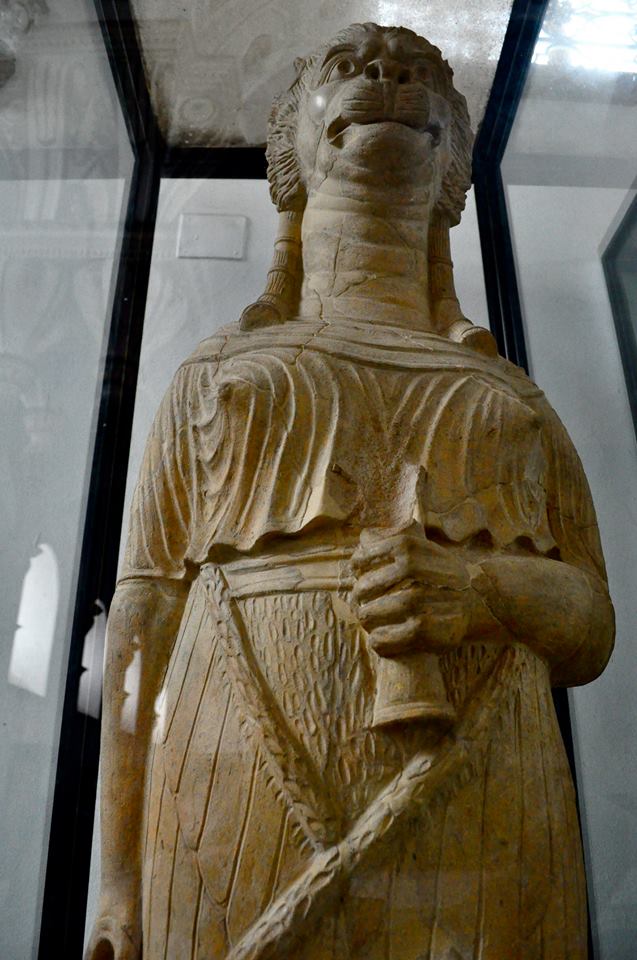
The historian Al Morakochi Ibn Idhari said about her that “All those who lived in the Africa of Romans (at that time) were afraid of her, as all Amazigh people were obedient to her.”
Dihya had defeated the invaders of North Africa on many occasions including the Romans, the Byzantines, and the Arabs. The last battle that she led occurred between her and the Arab leader Hassan ben Nouman who was first defeated and withdrew from the battle in 693 AD. She was called “Kahina” by Arabs as she was accused of sorcery. Afterward, Tihya did not punish or kill the captives of Hassan ben Nouman’s soldiers who were about the age of 80. Instead, she released them and in one case even adopted a prisoner who he was kind with good manners which resembled the nature of the Amazigh people.
The historian Ibnu Al-hakam said, in his book "Kitab Futuh Misr wa Alamghreb" at page 228, that “Dihya treated her captives well, and released them, except for a man from Bani Abbas, named Khalid Benu Yazid, whom she adopted. Dihya defended her region by adopting the policy of “Burned Land,” that is to say, she burnt all seductive things that Arabs ran after and kept only agricultural fields and pastures.
Dihya said that “The Arabs want our country for gold, silver, and metal, but for us, farms and pastures are enough. We have no solution but destroying the land of Africa (North Africa), so that Arabs would despair and lose hope and leave forever.” - Ibn Idhari P 35-36
“[Dihya, the Amazigh knight who marked the history unlike any other woman, she rode horses and sought among the folk from the Aures to Tripoli, taking arms to defend her ancestral land.” - Ibn Khaldun book lessons Part VII, p. 11.
Dihya was buried in Khenchela, a city in modern Algeria.
Tanit, Tin-hanan, and Dihya are only a few examples of Amazigh women who brought pride to Amazigh society and contributed to its civilization, a fact unfortunately neglected by official institutions in North African countries. Women have always been an important member in Amazigh families and societies at large. Thus, there are still tribes which pay tribute to Amazigh female saints who are called “lella,” a term used to venerate and honor people with a high reputation.
________________________________________________________________________________
Tannit
by the Libyans as the Tannit Goddess of weaving
by the Phoenicians as as Tanit
by the Greeks as Athena
by the Romans as Juno
by the Ancient Egyptians as Nit
All seeing eye on top of pyramid, sign of Tanit







Sardonic grin - Phoenicians euthanized their elderly with Hemlock
One drop of the poisonous hemlock water-dropwort was enough to completely incapacitate the target—the victim's muscles would grow taut, making it impossible to move, and the unusually uncomfortable smile would spread across the victim's face. Because of the "frozen" musculature, the face would remain like that. Meanwhile, the assassin would complete his or her murderous job. The poisonous hemlock was also used for other, less sadistic purposes, though in many ways it was still highly immoral. Hemlock was employed by the Phoenicians of ancient Sardinia as a way to forcibly "euthanize" the elderly. Interpret that as you will.
Most often, the herb was dropped in the drink of an elderly individual, and then when the effects of the poison took over, the person would be killed through varying methods—the most commonly reported from ancient records are deadly beatings, boulders to the head, etc. All the while, the uncomfortable grin likely sent the illusion of gratitude to the euthanizers.
A risus sardonicus , grimacing smile, also appears in some cases of tetanus or strychnine poisoning, so hemlock poisoning is less likely to be associated with the term sardonic grin these days. However, it is interesting to consider that the term has lasted as a vernacular saying, with different situations linked to it, since the 8th century BC.
In the present, a "sardonic grin" has become a term most often used to describe a grimace—a smile that never reaches the eyes, and which gives the appearance of a "clothes-hanger smile". It looks forced, and painful, and the sardonic grin is also uncomfortable to behold. The term also remains a commonly used metaphor in literary circles.
Funeral masks possibly showing a "sardonic grin. "
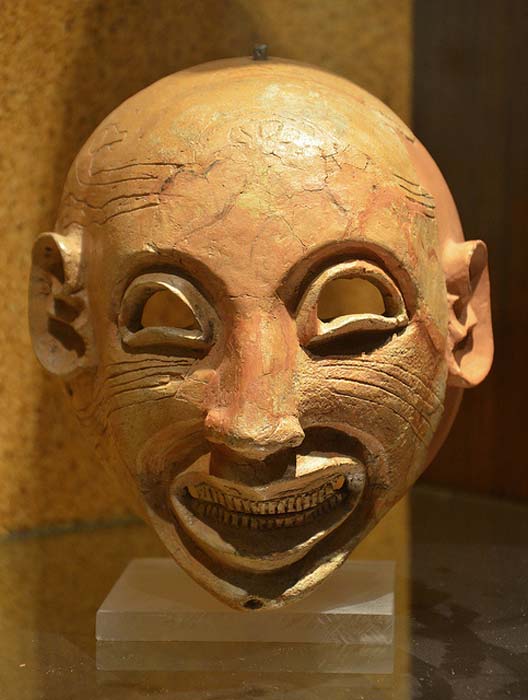





One drop of the poisonous hemlock water-dropwort was enough to completely incapacitate the target—the victim's muscles would grow taut, making it impossible to move, and the unusually uncomfortable smile would spread across the victim's face. Because of the "frozen" musculature, the face would remain like that. Meanwhile, the assassin would complete his or her murderous job. The poisonous hemlock was also used for other, less sadistic purposes, though in many ways it was still highly immoral. Hemlock was employed by the Phoenicians of ancient Sardinia as a way to forcibly "euthanize" the elderly. Interpret that as you will.
Most often, the herb was dropped in the drink of an elderly individual, and then when the effects of the poison took over, the person would be killed through varying methods—the most commonly reported from ancient records are deadly beatings, boulders to the head, etc. All the while, the uncomfortable grin likely sent the illusion of gratitude to the euthanizers.
A risus sardonicus , grimacing smile, also appears in some cases of tetanus or strychnine poisoning, so hemlock poisoning is less likely to be associated with the term sardonic grin these days. However, it is interesting to consider that the term has lasted as a vernacular saying, with different situations linked to it, since the 8th century BC.
In the present, a "sardonic grin" has become a term most often used to describe a grimace—a smile that never reaches the eyes, and which gives the appearance of a "clothes-hanger smile". It looks forced, and painful, and the sardonic grin is also uncomfortable to behold. The term also remains a commonly used metaphor in literary circles.
Funeral masks possibly showing a "sardonic grin. "






HIVITES SYMBOLISM: DAGON
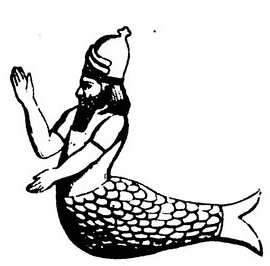
MILITARY ORDER OF DAGON
The Ancient Roman Legions worshipped their mascot god. So do our modern Western military forces. Dagon is the god worshipped by the top US and Australian military brass. age 12 of Lt. Col. Michael Aquino’s original CV (dated 1 September 2018) boasts of his membership in the ‘Esoteric Order of Dagon.’ Subsequent publications of Aquino’s CV deleted this revelation, following my going public about this. Here is the missing snippet:
Dagon (Hebrew: דָּגוֹן, Dāgōn), or more accurately Dagan, (Sumerian: , romanized: dda-gan;[1]Phoenician: , romanized: Dāgān) was a god worshiped in ancient Syria across the middle of the Euphrates, with primary temples located in Tuttul and Terqa, though many attestations of his cult come from cities such as Mari and Emar as well. In settlements situated in the upper Euphrates area he was regarded as the "father of gods" similar to Mesopotamian Enlil or Hurrian Kumarbi, as well as a lord of the land, a god of prosperity, and a source of royal legitimacy. A large number of theophoric names, both masculine and feminine, attests that he was a popular deity. He was also worshiped further east, in Mesopotamia, where many rulers regarded him as the god capable of granting them kingship over the western areas.
EYES WIDE OPEN FIONA BARNETT



DISCRIMINATION: MILITARY INTELLIGENCE PSY-OP
According to Kay Griggs, most senior Army and the Marine Corps are Marxistexistentialist communists and anarchists with German Ashkenazi heritage, and many are the offspring of the invading Nazi SS who were Ashkenazi homo-p***phile existentialist communists. Hitler (Ashkenazi) was recruited at a homosexual brothel.
I have additionally read that the Nazis targeted genuine Torah abiding Jews for elimination while employing Ashkenazi Talmudic Cabalists. That might explain why Lord Rothschild administered UK & Israel turned away boats of Jewish refugees who subsequently died in Nazi death camps.
Perhaps the Holocaust was a psychological operation with numerous benefits including the elimination of genuine Jews and Christians, and it provided a reason to establish Israel, and implement Lord Rothschild’s NWO totalitarian agenda. This is Hegelian Dialectic, where the same group creates a problem to solve, followed by a solution.
The Firm use the same tactic to cover for their tradition / ritual of institutionalised homosexual p***phile r*pe. Fake ‘born-again’ Christian William ‘Jerry’ Boykin is a prime example. He publicly campaign against gays in the military while secretly attending homopedophile sexual orgies. These military perverts all worship Dagon, not the Biblical God.
Training oversaw my Dagon training near drowning when I was chained and thrown off a US Special Ops navy vessel,
Jesuit-trained Leonas Petrauskas presided over these rituals in which babies, children and adults were murdered in honor of their gods including Moloch/Molech, Baal, Dagon, Imhotep, Horus, Anubis, Thoth and Isis. My abusers seemed to have a god for every occasion, but Lucifer was lord of them all.
DAGON
Dagon takes both reptilian and amphibian forms. The cavern system linking Holsworthy and Lucas Heights featured two main sacrificial areas dedicated to Dagon. A stone altar to reptilian Dagon is located beneath the Holsworthy end. Next to it stands a giant greenish metal statue of Dagon featuring scales and a dinosaur head and teeth. I attended rituals at this location with Gittinger, Kidman, Overton, DELTA soldiers, and senior military brass.
The bottom floor of ANSTO accesses a tunnel leading to a large cave with a rectangular Dagon ritual pool. The pool is made of stone and lined with steps on all sides. It connects to, and is fed by, a natural water source. At one end of the murky green pool sits a stone carving
of a fish monster with fin fingers and sharp teeth. I was hoisted over this pool at age six years and dunked repeatedly until I nearly drowned. Patricia Anne Conlon supervised this and determined, ‘She’s had enough.’
I suffered another Dagon drowning ritual at 12 years of age, in the cavern system beneath Holsworthy. My hands were tied behind my back and my legs secured together. I was lowered head-first into a long thin container filled with water. My next memory is of convulsing on the ground in a pool of water. Then I saw a giant fish out of water beating its tail, exactly where my body just lay. My next memory is of flashing lights and something long and choking being inserted in my throat. My next memory is of waking in the ANSTO hospital bed with Anne Conlon sitting to my left, looking concerned. The point of this exercise was to train me to hold my breath and swim underwater. Drowning taught me to recognise my
physical limits and recognise how far I could push my body before I drowned. It was also a ritual intended to evoke the ‘spirit of Dagon.’
View attachment 73697View attachment 73698
I experienced yet another Dagon training incident in the USA when I was 14 years old.
I was chained to a weight and thrown overboard into the sea. I was supposed to use my Dagon training to hold my breath, and my newly acquired psychic abilities to break free. I next recall collapsing on deck with medical personnel and the DELTA Commander leaning over me.
‘Did I do it?’ I asked my Commander. The other soldiers looked away in anger and disgust.
‘You did good, soldier,’ Commander muttered regretfully.
‘This is shit, man!’ one of the sailors complained…
DAGON AT DULCE
Dagon Hypnosis Induction
My memory of being thrown off the US naval vessel relates to my Dagon hypnosis induction which I adapted from the Aqua Man television show. Dagon is Aqua Man. The induction began with my diving off the navy boat. I then swam like Aqua Man to a submarine.
I entered the submarine through a domed top, passed through a door, down a spiral metal staircase, through another door, down a straight staircase, and through another door which brought me to the doctor surgery waiting room with the elevator and five doors. This was the
induction Aquino, Gittinger, Kidman, West, Petrauskas, and Anne Conlon used.
Josef Mengele created a deeper level of induction based on the same theme. His variation involved my diving from the US naval boat, bypassing the submarine, and entering an underwater stream. I spiralled down the stream to reach a large underwater citadel located on the ocean floor. I swam beneath a rocky craic and surfaced in a Dagon pool. I emerged from the pool via a wide set of stairs, passed through a castle door and entered Dagon’s golden throne room. Two doors sat either side of the throne, red on the left and blue on the right. I opened the blue door and saw shadowy mermaids like tadpoles, swimming overhead. I walked through a glass aquarium tunnel to a door at the far end. Behind this door was a tall room with walls containing countless arched insets. Each inset housed a costumed mannequin which resembled a program or skill set. I stepped backwards into one of the costumes and suddenly recognised a style of martial arts where everything flowed in circles.
When I first opened the red door during therapy, a tsunami of blood gushed into the throne room. Behind this door lay a stone hallway lined with iron cages full of children. At the end of the hall was another door, and behind that was Mengele’s lab in the US Embassy basement. A narrow window sat at the top of the wall to my right. Mengele sat in a chair below the window, behind a pale brown dentist chair. In the far-right corner behind Mengele was a blue door. Behind the door was a staircase with a metal rail which led to a stone tunnel.
This basement laboratory was both real and used as a program setting, to confuse my memory.
Pagan gods Dagon and Diana were rebranded Aqua Man and Wonder Woman.

MILITARY ORDER OF DAGON
The Ancient Roman Legions worshipped their mascot god. So do our modern Western military forces. Dagon is the god worshipped by the top US and Australian military brass. age 12 of Lt. Col. Michael Aquino’s original CV (dated 1 September 2018) boasts of his membership in the ‘Esoteric Order of Dagon.’ Subsequent publications of Aquino’s CV deleted this revelation, following my going public about this. Here is the missing snippet:
Dagon (Hebrew: דָּגוֹן, Dāgōn), or more accurately Dagan, (Sumerian: , romanized: dda-gan;[1]Phoenician: , romanized: Dāgān) was a god worshiped in ancient Syria across the middle of the Euphrates, with primary temples located in Tuttul and Terqa, though many attestations of his cult come from cities such as Mari and Emar as well. In settlements situated in the upper Euphrates area he was regarded as the "father of gods" similar to Mesopotamian Enlil or Hurrian Kumarbi, as well as a lord of the land, a god of prosperity, and a source of royal legitimacy. A large number of theophoric names, both masculine and feminine, attests that he was a popular deity. He was also worshiped further east, in Mesopotamia, where many rulers regarded him as the god capable of granting them kingship over the western areas.
EYES WIDE OPEN FIONA BARNETT



DISCRIMINATION: MILITARY INTELLIGENCE PSY-OP
According to Kay Griggs, most senior Army and the Marine Corps are Marxistexistentialist communists and anarchists with German Ashkenazi heritage, and many are the offspring of the invading Nazi SS who were Ashkenazi homo-p***phile existentialist communists. Hitler (Ashkenazi) was recruited at a homosexual brothel.
I have additionally read that the Nazis targeted genuine Torah abiding Jews for elimination while employing Ashkenazi Talmudic Cabalists. That might explain why Lord Rothschild administered UK & Israel turned away boats of Jewish refugees who subsequently died in Nazi death camps.
Perhaps the Holocaust was a psychological operation with numerous benefits including the elimination of genuine Jews and Christians, and it provided a reason to establish Israel, and implement Lord Rothschild’s NWO totalitarian agenda. This is Hegelian Dialectic, where the same group creates a problem to solve, followed by a solution.
The Firm use the same tactic to cover for their tradition / ritual of institutionalised homosexual p***phile r*pe. Fake ‘born-again’ Christian William ‘Jerry’ Boykin is a prime example. He publicly campaign against gays in the military while secretly attending homopedophile sexual orgies. These military perverts all worship Dagon, not the Biblical God.
Training oversaw my Dagon training near drowning when I was chained and thrown off a US Special Ops navy vessel,
Jesuit-trained Leonas Petrauskas presided over these rituals in which babies, children and adults were murdered in honor of their gods including Moloch/Molech, Baal, Dagon, Imhotep, Horus, Anubis, Thoth and Isis. My abusers seemed to have a god for every occasion, but Lucifer was lord of them all.
DAGON
Dagon takes both reptilian and amphibian forms. The cavern system linking Holsworthy and Lucas Heights featured two main sacrificial areas dedicated to Dagon. A stone altar to reptilian Dagon is located beneath the Holsworthy end. Next to it stands a giant greenish metal statue of Dagon featuring scales and a dinosaur head and teeth. I attended rituals at this location with Gittinger, Kidman, Overton, DELTA soldiers, and senior military brass.
The bottom floor of ANSTO accesses a tunnel leading to a large cave with a rectangular Dagon ritual pool. The pool is made of stone and lined with steps on all sides. It connects to, and is fed by, a natural water source. At one end of the murky green pool sits a stone carving
of a fish monster with fin fingers and sharp teeth. I was hoisted over this pool at age six years and dunked repeatedly until I nearly drowned. Patricia Anne Conlon supervised this and determined, ‘She’s had enough.’
I suffered another Dagon drowning ritual at 12 years of age, in the cavern system beneath Holsworthy. My hands were tied behind my back and my legs secured together. I was lowered head-first into a long thin container filled with water. My next memory is of convulsing on the ground in a pool of water. Then I saw a giant fish out of water beating its tail, exactly where my body just lay. My next memory is of flashing lights and something long and choking being inserted in my throat. My next memory is of waking in the ANSTO hospital bed with Anne Conlon sitting to my left, looking concerned. The point of this exercise was to train me to hold my breath and swim underwater. Drowning taught me to recognise my
physical limits and recognise how far I could push my body before I drowned. It was also a ritual intended to evoke the ‘spirit of Dagon.’
View attachment 73697View attachment 73698
I experienced yet another Dagon training incident in the USA when I was 14 years old.
I was chained to a weight and thrown overboard into the sea. I was supposed to use my Dagon training to hold my breath, and my newly acquired psychic abilities to break free. I next recall collapsing on deck with medical personnel and the DELTA Commander leaning over me.
‘Did I do it?’ I asked my Commander. The other soldiers looked away in anger and disgust.
‘You did good, soldier,’ Commander muttered regretfully.
‘This is shit, man!’ one of the sailors complained…
DAGON AT DULCE
Dagon Hypnosis Induction
My memory of being thrown off the US naval vessel relates to my Dagon hypnosis induction which I adapted from the Aqua Man television show. Dagon is Aqua Man. The induction began with my diving off the navy boat. I then swam like Aqua Man to a submarine.
I entered the submarine through a domed top, passed through a door, down a spiral metal staircase, through another door, down a straight staircase, and through another door which brought me to the doctor surgery waiting room with the elevator and five doors. This was the
induction Aquino, Gittinger, Kidman, West, Petrauskas, and Anne Conlon used.
Josef Mengele created a deeper level of induction based on the same theme. His variation involved my diving from the US naval boat, bypassing the submarine, and entering an underwater stream. I spiralled down the stream to reach a large underwater citadel located on the ocean floor. I swam beneath a rocky craic and surfaced in a Dagon pool. I emerged from the pool via a wide set of stairs, passed through a castle door and entered Dagon’s golden throne room. Two doors sat either side of the throne, red on the left and blue on the right. I opened the blue door and saw shadowy mermaids like tadpoles, swimming overhead. I walked through a glass aquarium tunnel to a door at the far end. Behind this door was a tall room with walls containing countless arched insets. Each inset housed a costumed mannequin which resembled a program or skill set. I stepped backwards into one of the costumes and suddenly recognised a style of martial arts where everything flowed in circles.
When I first opened the red door during therapy, a tsunami of blood gushed into the throne room. Behind this door lay a stone hallway lined with iron cages full of children. At the end of the hall was another door, and behind that was Mengele’s lab in the US Embassy basement. A narrow window sat at the top of the wall to my right. Mengele sat in a chair below the window, behind a pale brown dentist chair. In the far-right corner behind Mengele was a blue door. Behind the door was a staircase with a metal rail which led to a stone tunnel.
This basement laboratory was both real and used as a program setting, to confuse my memory.
Pagan gods Dagon and Diana were rebranded Aqua Man and Wonder Woman.
Last edited:
Another Hivite family - Fritz Springmeir connects the Mondavi and Rothschild winery
Ginormous Robert Mondavi Sculpture
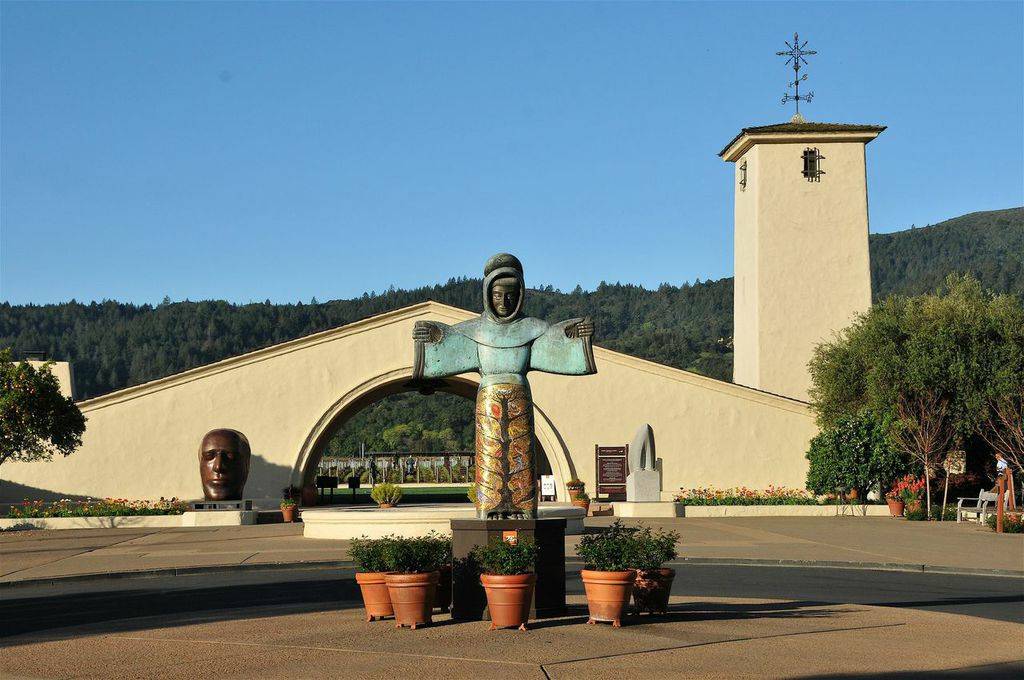


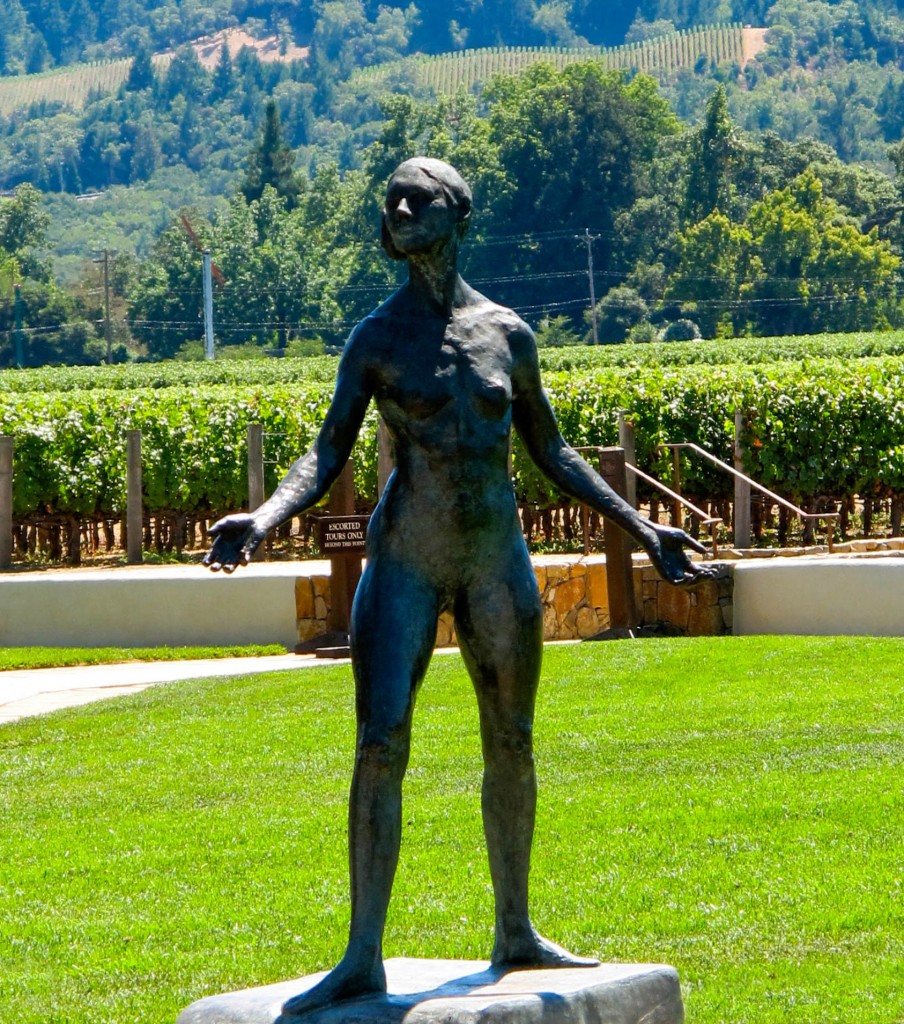


One eye





At University of Davis CA they have a "Robert Mondavi Institute"

Ginormous Robert Mondavi Sculpture






One eye





At University of Davis CA they have a "Robert Mondavi Institute"

Queen Elizabeth and the Welsh Druids
Princess Elizabeth being led by “an acolyte to Archdruid Crwys Williams” for her initiation into the “Mystic Circle of Bards” or the “Gorsedd of the Bards” in Wales on August 6, 1946. The Queen was being initiated as an “Honorary Ovate” the highest order of merit in the Gorsedd.
This photo is from the office Royal Collection Trust website



The Welsh Druids website - http://www.gorsedd.bzh/
Their flags. The middle is the flag of Brittany.

This lady in the audience doesn't seem to be enjoying this

Part of the ceremony - high five

Different leaders




Poking the trees, catching leaves, then setting them on fire





Osiris Crook, theirs is also striped. A snake on a staff. A Y shaped staff and a sword.



This photo is from the office Royal Collection Trust website



The Welsh Druids website - http://www.gorsedd.bzh/
Their flags. The middle is the flag of Brittany.

This lady in the audience doesn't seem to be enjoying this

Part of the ceremony - high five

Different leaders




Poking the trees, catching leaves, then setting them on fire





Osiris Crook, theirs is also striped. A snake on a staff. A Y shaped staff and a sword.



Druids even have a college in France - DRUVIDIA (druvidiapikbzh.com)




Robe Colors
More ritual pictures. Top is an old lady laying on a rock altar.


"Master Bards" look like Masons

Brigantia - one of their goddesses
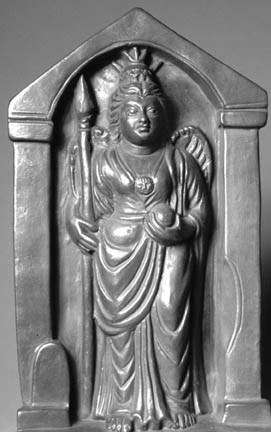


Holiday of Imbolc


Beltane
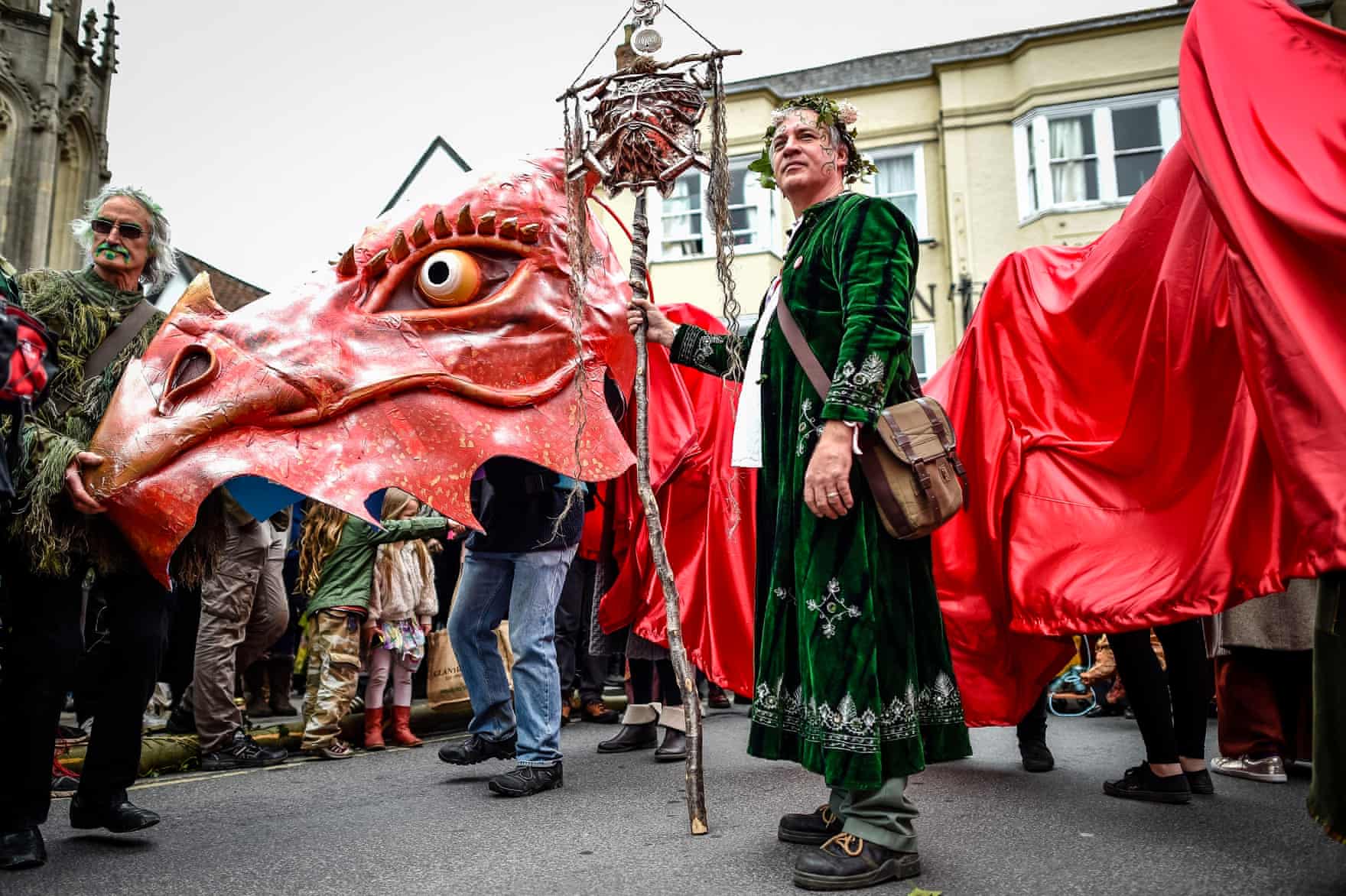
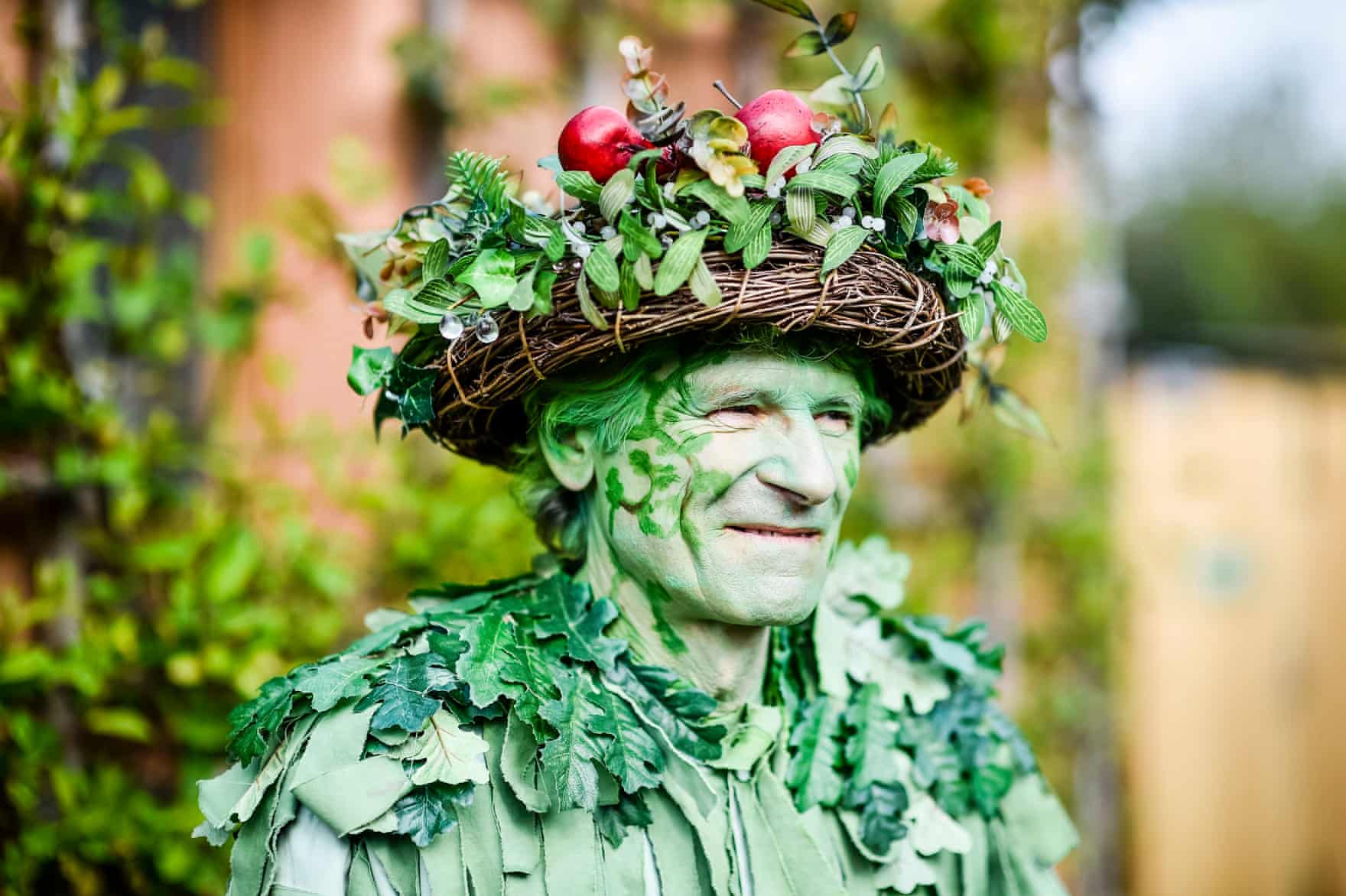

Lugnasadh


A closer look at the design on the sword, other daggers, a different staff and a close up of the snake staff. Doesn't the "snake" look like a lamb or goat?





Robe Colors
More ritual pictures. Top is an old lady laying on a rock altar.


"Master Bards" look like Masons

Brigantia - one of their goddesses



Holiday of Imbolc


Beltane



Lugnasadh


A closer look at the design on the sword, other daggers, a different staff and a close up of the snake staff. Doesn't the "snake" look like a lamb or goat?

^Lord Rothschild administered UK & Israel .....
Israel wasn't a nation so how could he administer it. The people in the countries of Europe didn't see themselves as Israelites just JEWISH at the time. It wasn't till after the nation was put back that ancestery seemed to matter with people returning specially after 1968 so who's dictating the narrative?
and then this: I entered the submarine through a domed top, passed through a door, down a spiral metal staircase.....
Umm no you didn't. You would have entered the sub through the torpedo tubes easier to pressurize & depressurize for entry. Open the top hatch is for emergency escape under way when flooding already not good idea to open if not an emergency....
Israel wasn't a nation so how could he administer it. The people in the countries of Europe didn't see themselves as Israelites just JEWISH at the time. It wasn't till after the nation was put back that ancestery seemed to matter with people returning specially after 1968 so who's dictating the narrative?
and then this: I entered the submarine through a domed top, passed through a door, down a spiral metal staircase.....
Umm no you didn't. You would have entered the sub through the torpedo tubes easier to pressurize & depressurize for entry. Open the top hatch is for emergency escape under way when flooding already not good idea to open if not an emergency....













